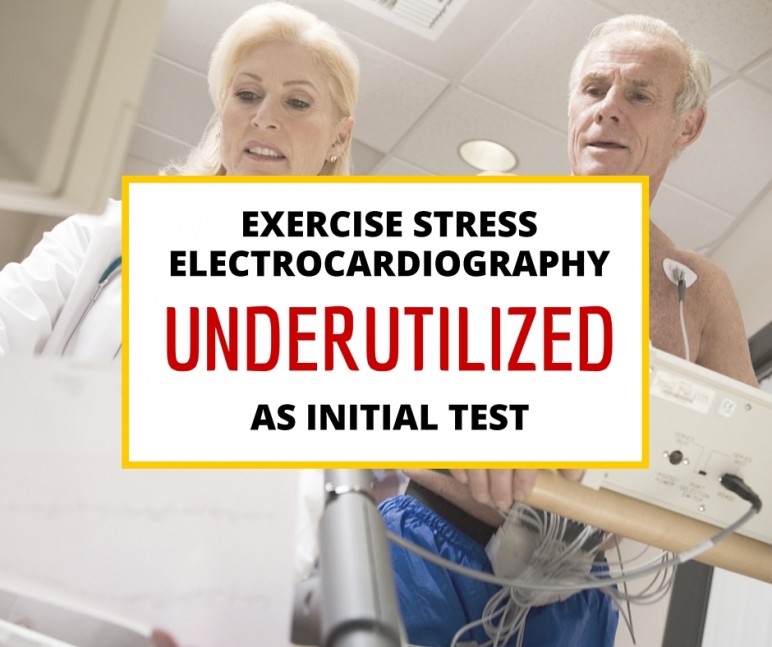"Exercise stress electrocardiography (ExECG) is underutilized as the initial test modality in patients with interpretable electrocardiograms who are able to exercise. Although stress myocardial imaging techniques provide valuable diagnostic and prognostic information, variables derived from ExECG can yield substantial data for risk stratification, either supplementary to imaging variables or without concurrent imaging. (abstract)
What's your diagnostic test workflow?
A recent paper in JACC: Cardiovascular Imaging reviewed literature on the latest advances in exercise stress electrocardiography (ExECG) and argued that despite the ACC's recommendations, the test is still "underutilized" as the initial diagnostic test modality for suspected coronary artery disease.
"The majority of patients still undergo stress imaging as the initial testing strategy," wrote authors Jamieson Bourque, MD and George Beller, MD. "This finding is stable over time and likely occurs due to a widespread perception that ExECG alone has insufficient diagnostic accuracy for CAD detection."
To refute this perception, the authors cite a meta-analysis of 24,047 patients in 147 studies and argue that the ExECG is "still considered diagnostic in most patients able to reach 85 percent of their maximum age-predicted heart rate."
Even in women with suspected CAD, the ExECG holds its own as a diagnostic tool:
"Many clinicians refer women directly to MPI due to concern about ExECG accuracy. This argument was refuted by the WOMEN (What is the Optimal Method for Ischemia Evaluation in Women) trial, in which 824 symptomatic women with good exercise tolerance were randomized to ExECG with or without MPI. The group without MPI had a 48 percent diagnostic cost savings with no difference in major adverse cardiac events over 2 years of follow-up."
Due to the cited evidence, the authors argue that "adequate risk stratification is achieved with a simple strategy of ExECG without imaging."
And thanks to a "large and growing number of supplementary variables, such as exercise workload achieved and ECG changes beyond ST-segment depression," the ExECG remains the "recommended method of initial evaluation in intermediate-risk patients with symptoms consistent with CAD."
Are you augmenting the diagnostic accuracy of ExECG?
- Impaired chronotropic response to exercise.
- Impaired heart rate recovery post-exercise.
- Abnormal systolic blood pressure recovery ratio.
- Treadmill-induced typical angina.
To learn more, read the review.
Is the ExECG the default or initial test in your diagnostic workflow? If not, why not?
Leave a comment below!
